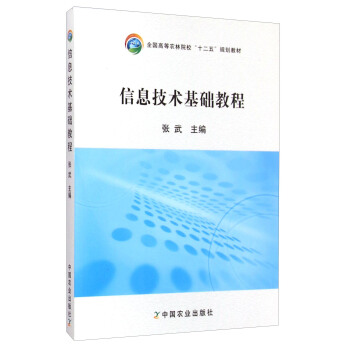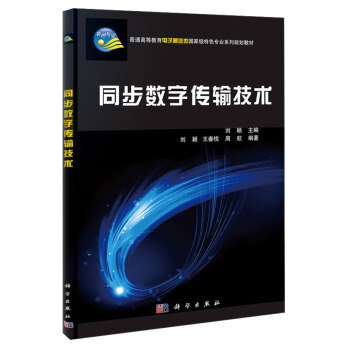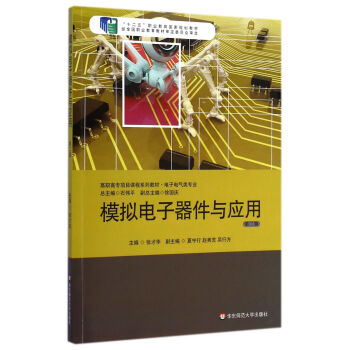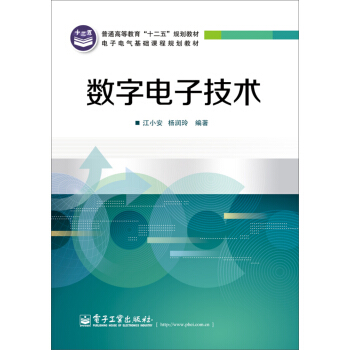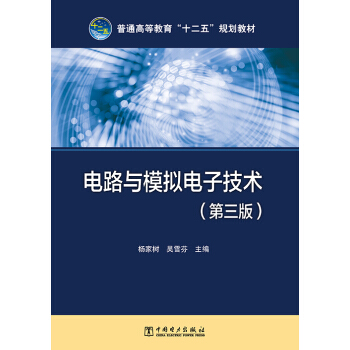![信号与系统基础/高等学校电子信息类专业系列教材 [Fundamentals of Signals and Systems]](https://pic.tinynews.org/11623531/54c8bcfbN9246b002.jpg)

具体描述
编辑推荐
“信号与系统”是包括电气工程、电子信息工程、通信工程和自动化等本科专业重要的专业基础课程之一。本教材对应于全国双语示范课程。作者结合多年在国内外的教学经验及心得,针对当前双语教学及全英文教学现状,着眼于学生自学能力的培养和分析问题能力的提高,编写了本书。本教材教辅资源完整,可到清华大学出版社网站本书页面下载。
侧重培养学生分析问题的能力及注重研究问题方法的学习。与现有同类中英文教材相比:
文字精炼,内容安排上采用模拟-离散双域交替的方式。
在处理常系数线性微分(差分)方程及由其描述的线性时不变系统及与变换的关系上有独到之处。
知识体系完整,系统及逻辑性强,同时也适用于自学。
内容简介
“信号与系统”是电气工程、电子信息工程、通信工程和自动化等本科专业重要的基础课程之一。《信号与系统基础/高等学校电子信息类专业系列教材》对应于“信号与系统”全国双语示范课程。书中凝练了作者多年的教学经验及心得,针对国内双语及全英文教学现状,力求培养学生的自学能力和分析问题的能力。
《信号与系统基础/高等学校电子信息类专业系列教材》特色:
1)文字简练,内容安排上采用模拟-离散双域交替的方式。
2)在处理常系数线性微分(差分)方程及由其描述的线性时不变系统与变换的关系上有独到之处。
3)知识体系完整,系统及逻辑性强,同时也适用于自学。详见书中前言(Preface)部分。
作者简介
李刚,教授,博士生导师,浙江省“钱江学者”特聘教授。1982年1月毕业于北京工业学院(现北京理工大学),1990年11月获比利时新鲁汶大学工学博士。1992年4月至2007年2月在新加坡南洋理工大学任教。长期从事数字信号处理、系统与控制理论等方面的教学与研究。主要研究方向为信号变换与压缩、数字系统结构与参数化理论及优化方法。常丽萍,博士,副教授,2008年6月毕业于中国科学院上海光学精密机械研究所,目前在浙江工业大学信息工程学院从事教学和科研工作。研究方向为信号稀疏表示模型、压缩感知与信号检测等。
李胜,博士,讲师,2010年12月取得英国约克大学博士学位,曾获约克大学授予的K.M.Stott科研奖,于2011年10月在德国伊尔梅瑙工业大学通信研究实验室结束博士后工作。目前在浙江工业大学任教。主要研究方向包括自适应算法、无线通信系统、通信接收机设计、干扰消除等。
内页插图
目录
Preface
Chapter 1 Introduction
1.1 Overview of signals and systems
1.1.1 What is a signal?
1.1.2 What is a system?
1.2 Description and classification of signals
1.2.1 Continuous-time signals and discrete-time signals
1.2.2 Energy signals and power signals
1.2.3 Periodic signals and non-periodic signals
1.2.4 Deterministic signals and random signals
1.2.5 Elementary signals
1.3 Description of Systems
1.3.1 Elementary systems
1.3.2 System modelling
1.4 Properties of systems
1.4.1 Memoryless and with memory
1.4.2 Causality
1.4.3 Invertibility
1.4.4 Stability
1.4.5 Time-invariance
1.4.6 Linearity
1.5 Summary
1.6 Problems
Chapter 2 Time-domain Analysis of LTI Systems
2.1 Introduction
2.2 The unit impulse response and convolutions
2.2.1 The convolution sum ~
2.2.2 The convolution integral
2.3 Properties of convolutions and equivalent systems
2.4 Causality and stability of LTI systems
2.5 Systems constrained with LCCDEs
2.5.1 Continuous-time systems constrained with LCCDEs
2.5.2 Discrete-time systems characterized by LCCDEs
2.6 Summary
2.7 Problems
Chapter 3 Fourier Analysis of Signals
3.1 Introduction
3.2 Fourier series for continuous-time periodic signals
3.3 Fourier series for discrete-time periodic signals
3.4 Why should a signal be transformed?
3.5 Fourier transform for continuous-time signals
3.5.1 Properties of Fourier transform
3.5.2 Inverse Fourier transform
3.6 The discrete-time Fourier transform
3.6.1 Properties of DTFT
3.6.2 Inverse DTFT
3.7 Fourier series and Fourier transforms
3.8 Summary
3.9 Problems
Chapter 4 Frequency-domain Approach to LTI Systems
4.1 Introduction
4.2 Frequency response of LTI systems
4.3 Bode plots for continuous-time LTI systems
4.4 Frequency response of LTIs described with LCCDEs
4.5 Frequency domain approach to system outputs
4.6 Some typical LTI systems
4.6.1 All-pass systems
4.6.2 Linear phase response systems
4.6.3 Ideal filters
4.6.4 Ideal transmission channels
4.7 Summary
4.8 Problems
Chapter 5 Discrete Processing of Analog Signals
5.1 Introduction
5.2 Sampling of a continuous-time signal
5.3 Spectral relationship and sampling theorem
5.4 Reconstruction of continuous-time signals
5.5 Hybrid systems for discrete processing
5.6 Discrete Fourier transform
5.7 Compressed sensing
5.8 Summary
5.9 Problems
Chapter 6 Transform-domain Approaches
Chapter 7 Structures and State-space Realizations
Chapter 8 Comprehensive Problems
Appendices
Bibliography
前言/序言
The concepts of signals and systems are the corner-stone of a wide variety of areas, ranging from home-oriented consumer electronics and multimedia entertainment products to sophisticated communications, aeronautics and astronautics, and control. The ideas and approaches associated with these concepts have great e.ects on our life in one way or another. Although the signals and systems which arise across those .elds are naturally di.erent in their physical make-up and application, the principles and tools for analyzing signals and systems are the same and hence applicable to all of them. Therefore, an introductory course on signals and systems is fundamental and compulsory for an engineering under-graduate curriculum in any well-established tertiary (education) institutions. Such a course is commonly designed in one of the two forms below:.
a one-semester subject that intends to provide students with a rich set of concepts and tools for analyzing deterministic signals and an important class of systems known as linear time-invariant systems;
.
a two-semester subject that expands on the one-semester course by adding more detailed treatment of signal processing and systems for speci.ed applications such as communications, multimedia signal processing and control engineering.
This book takes the .rst form and assumes that the students have a background in calculus and introductory physics.
Why another “Signals and Systems”?
Given that there are many well-written textbooks on signals and systems available, our readers would be screaming when seeing this textbook: Why another “Signals and Systems”?
The thought of writing such a textbook was stimulated in 2007 when the .rst author conducted a 2nd year course on signals and systems in Zhejiang University of Technology (ZJUT) in Hangzhou, which he just joined from Nanyang Technological University (NTU), Republic of Singapore. The course was designed as “shuang yu ke” spelled in Chinese, meaning that the teaching materials such as the textbooks and slides are all in English and as to the class language, the lecturers can choose either Chinese, English or a mixture of the two—a typical Chinese style! The textbooks adopted were those popularly used in the world but were found very di.cult to most of our students as their English is not good enough to deal with those textbooks of one thousand pages or so in length.1 This motivates him to write a new “Signals and Systems”
1Here, we have those big masters of Signals and Systems to “blame”—why not writing their text-book in Chinese!
with a primary objective of providing a condensed version of “Signals and Systems” in English, while keeping the important technical materials as much as possible.
Most of us agree that for a university study it is more important to teach students how to learn and analyze than what to be learned and analyzed. The .rst author still remembers what was said by Professor Y. Liu who taught him calculus in 1978 in Beijing Institute of Technology (BIT) (now, known as Bei Li Gong) that a good textbook, say of ten chapters, should be written in such a way that after the .rst four chapters taught by the lecturer, the rest can be studied by students themselves easily. What Prof. Liu really meant is that a textbook should be written to facilitate and reinforce self-study. This is another objective that this textbook is intended to achieve. Given the mathematical nature of this subject, rigidity should be sustained as much as possible, which is something very important to engineering students to learn. This is the third objective of this textbook.
How the book is structured ?
One of the reasons for the existing textbooks of signals and systems to have easily over eight hundred pages is due to the continuous-and discrete-time forms of signals and systems. The success of a signals and systems that achieves our primary object lies in how to provide a balanced and integrated treatment of the two forms in a pedagogical way that can help students see the fundamental similarities and di.erences between the two without too much repeating. With all of these in mind, this book is organized as follow.
. Chapter 1 is aimed to provide an overview of signals and systems. Compared with the one in most of the signals and systems, it is condensed with an emphasis on the periodical signals and linear time-invariant (LTI) systems.
. Chapter 2 deals with the time-domain approach to the LTI systems. Since the key to the development of this chapter is to exploit the properties of linearity and time-invariance as well as signal decompositions, the concepts of unit impulse re-sponse and convolution are developed in details for the discrete-time case, while the continuous-time counterparts are directly given. One of the remarkable points emphasized in this chapter is the equivalence between the LTI systems and con-volutions, which relates the physical interpretation and mathematical expression. Another important technical point in this chapter is the establishment of a con-clusion which states that any complete solution of a linear constant coe.cient di.erential/di.erence equation (LCCDE) can be characterized by the sum of the output of an LTI system excited by the force signal and a homogeneous solution of the LCCDE. This conclusion yields a very clear picture of the relationship be-tween an LCCDE and the systems that it can characterize. With the help of the
......
用户评价
这本书的编排方式真的让我眼前一亮,它没有像我之前看过的某些教材那样,一股脑地堆砌大量公式和定理,而是巧妙地将理论与实践相结合。在讲解一个新概念之前,通常会先引入一个实际的例子,比如声音信号的传播或者电路的响应,然后才引出相关的理论知识。这种“由果溯因”的方式,让我更容易理解理论的由来和必要性。而且,书中穿插的“例题解析”部分非常详尽,每一个步骤都解释得很清楚,让我能够跟着作者的思路一步步地去解决问题。我尤其喜欢其中关于“拉普拉斯变换”的章节,作者用了很多篇幅讲解了它在求解微分方程方面的优势,这正是我在学习高等数学时一直困惑的地方,通过这本书,我似乎找到了解决问题的钥匙。另外,书中还提供了一些可供探索的“拓展阅读”内容,这对于那些想深入了解某个特定话题的学生来说,无疑是极大的福利。
评分我一直觉得学习一门新的学科,最怕的就是找不到学习的“感觉”,而这本书恰恰给予了我这种感觉。它在内容的深度和广度上都做得相当出色。在讲解基础概念的时候,它循序渐进,逻辑清晰,让我能牢牢掌握住每一个知识点。而当进入更深入的主题时,比如“离散时间傅里叶变换”和“Z变换”,它又能展现出相当的深度,并且通过大量的图示和详细的推导,让我能够真正理解其背后的数学原理。这本书的排版也很舒服,页边距恰到好处,文字大小适中,即使长时间阅读也不会感到疲劳。我最欣赏的是它在处理一些复杂的数学推导时,并没有回避,而是给出了非常详尽的解释,让我能够理解每一步的逻辑。这本书的出现,让我对信号与系统这门学科的畏惧感大大减少,反而充满了学习的动力。
评分这本书的印刷质量真的让我惊喜,纸张厚实,文字清晰,翻阅起来手感很舒适。封面设计简洁大气,传递出一种严谨的学术氛围。在拿到书的那一刻,我就被它扎实的外观所吸引。打开第一页,目录清晰明了,章节划分合理,让人一眼就能掌握全书的整体框架。我对“傅里叶变换”那一章尤其感兴趣,我一直觉得这是信号处理的核心,而这本书的编排方式似乎能让我更系统地理解其原理和应用。书中大量的图示也让我眼前一亮,这些图清晰地展示了各种信号的波形以及系统对信号的处理过程,这对于我这种视觉型学习者来说简直是福音。一些关键公式的推导也标注得非常详细,每一步都看得清楚,不会让人感到突兀。而且,我觉得这套教材的定价也相对合理,考虑到其精良的制作和内容的深度,我觉得物超所值。我计划利用这个暑假好好钻研一番,希望这本书能成为我信号与系统学习路上的得力助手。
评分这本书的作者在内容安排上非常有匠心,他似乎非常懂得如何循序渐进地引导读者。在刚开始接触“模拟信号”和“数字信号”的概念时,作者用了很多生活中常见的例子,比如收音机里的声音、CD里的音乐,让我能够直观地感受到它们之间的区别。接着,他才慢慢引出这些信号的数学表示方法,比如连续时间信号的数学模型和离散时间信号的采样过程。这种由浅入深的学习方式,让我觉得非常轻松。更令我惊喜的是,书中还包含了大量的“练习题”,这些练习题的难度梯度设计得非常合理,从简单的概念巩固到复杂的综合应用,应有尽有。我试做了几道,发现它们都能很好地检验我是否真正理解了章节内容。这本书的质量和内容都给我留下了深刻的印象,我觉得它非常适合作为我们电子信息类专业的入门教材。
评分在翻阅这本书的过程中,我发现它的语言风格非常平实易懂,对于像我这样初次接触信号与系统这门课程的学生来说,这一点非常重要。作者避免了过于晦涩的专业术语,而是用一种循序渐进的方式,将复杂的概念层层剥开,让我能够逐步理解。例如,在介绍“卷积”这一概念时,书中不仅给出了严格的数学定义,还配以生动的类比和图形解释,让我一下子就豁然开朗。我特别喜欢它在每个小节末尾都设置了“小结”和“思考题”,这极大地帮助我巩固了刚刚学到的知识,并且能引导我进行更深入的思考。其中一些思考题的难度适中,既能检验我的理解程度,又不至于让我产生挫败感。此外,书中还穿插了一些实际应用案例,比如在通信系统、图像处理中的应用,这让我更能体会到信号与系统这门学科的实际价值,也激发了我进一步学习的兴趣。总的来说,这本书的写作非常用心,充分考虑到了读者的学习习惯和认知规律。
相关图书
本站所有内容均为互联网搜索引擎提供的公开搜索信息,本站不存储任何数据与内容,任何内容与数据均与本站无关,如有需要请联系相关搜索引擎包括但不限于百度,google,bing,sogou 等
© 2026 book.idnshop.cc All Rights Reserved. 静思书屋 版权所有

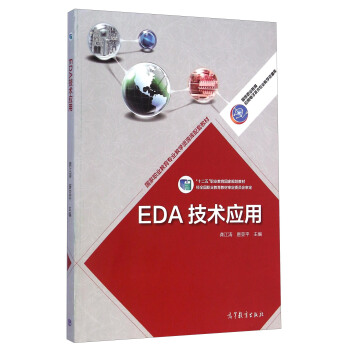

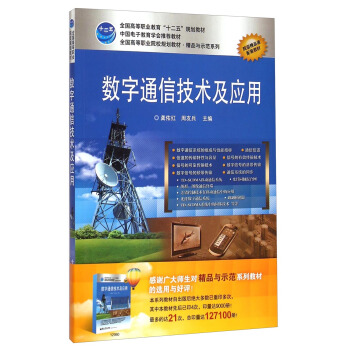
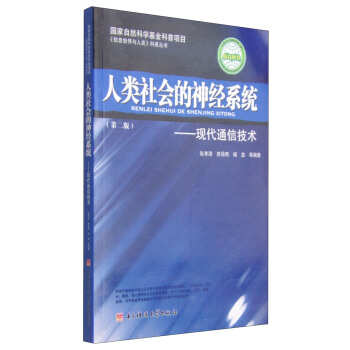
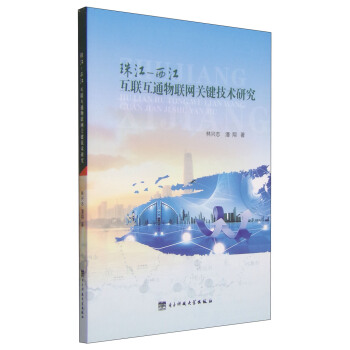


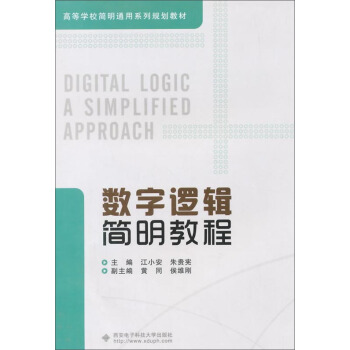
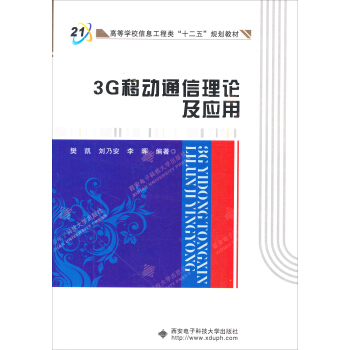

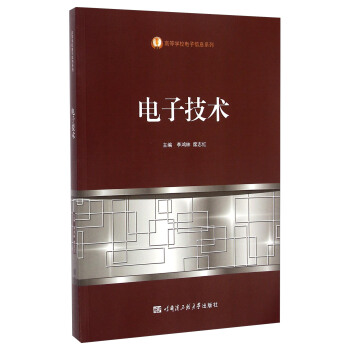
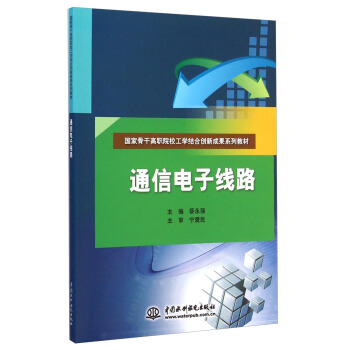
![数字电路与系统设计/21世纪高等院校信息与通信工程规划教材 [21st Century University Planned Textbooks of Information and Communication Engineering:Digital Circuits and System Designs] pdf epub mobi 电子书 下载](https://pic.tinynews.org/11635602/554b0a7eN6a35173f.jpg)

